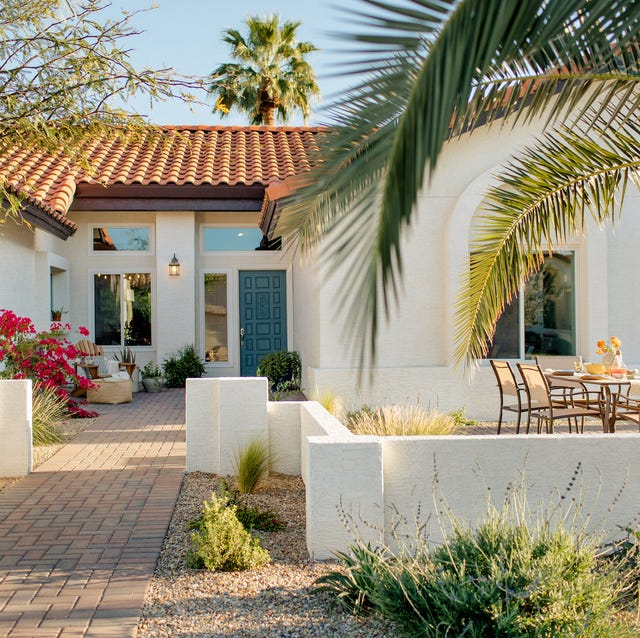
Earth Day is right around the corner, which means it’s time to look at how sustainably we’re all living. While we love that this day reminds us to check in with ourselves and learn what we can do more of in the present to help out in the future, we believe it’s important to live in as eco-friendly a way as possible all year. We’re sure many of you feel the same way—however, it can be hard to know where and how to get started. That’s why we’ve gathered examples of homes that make sustainable living look easy and beautiful, so you can see how to create an eco-friendly house you love.
Now, we admit that some of the eco-friendly houses below are more accessible than others. (Nobody expects you to DIY a dugout to live in.) But they’re filled with food for thought, some of which you can act on now. For instance, you could rip the invasive plants out of your yard or look into installing solar panels. And if some of these ideas are in your future plans but not your current budget, there are smaller sustainable changes you can make in your day-to-day life now. Shop eco-conscious brands, talk to a designer or contractor about future-proofing your house, and even stay in hotels or Airbnbs that keep the earth in mind when you travel—it’s perfectly acceptable to take baby steps into living a more environmentally friendly life.
In the meantime, let these eco-friendly houses inspire you to be more aware of how your home fits into the environment.
A Marshland Marvel in Northern Florida
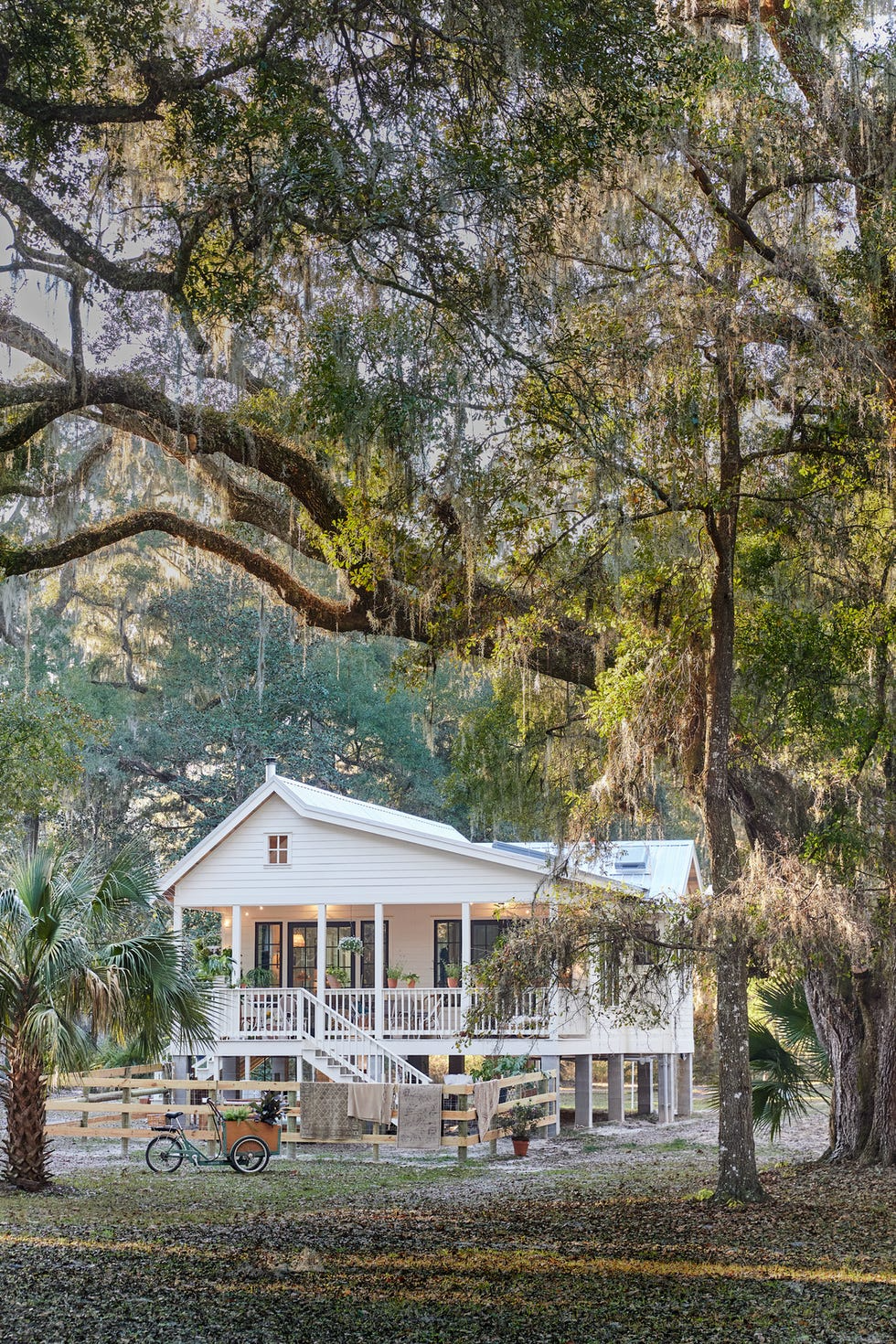
If you’re building a home that’s surrounded by beautiful, natural scenery, you don’t want to disrupt or ruin the environment you fell in love with in the first place. After Whitney Leigh Morris and her family bought 10 acres of protected Florida marshland, she knew she wanted to protect the ecosystem as carefully as possible. To build their eco-friendly house, she used almost 100 percent recycled wood and devised a system of screens, fans, and skylights to minimize the use of heat and air-conditioning.
A Farm-to-Table Find in Central Colorado
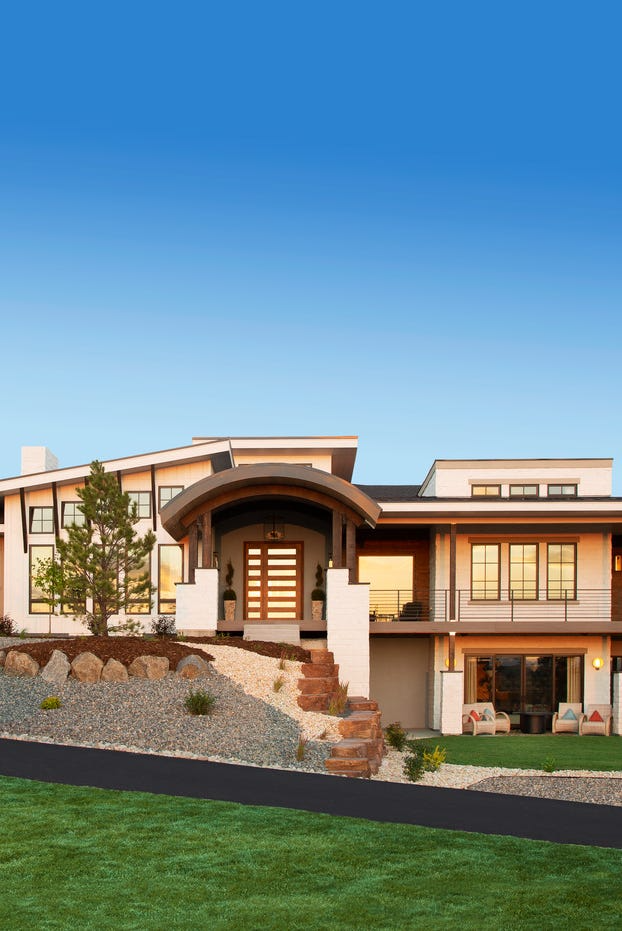
For our 2020 Whole Home, we gathered a team of designers to decorate a home in Fox Hill, Colorado, an eco-friendly community between Denver and Colorado Springs that’s centered around a sustainable farm where residents can pick their own produce. The interior of this ec0-friendly house is full of sustainable ideas you can borrow, like the compost bin and vacuum sealer in the kitchen.
A Reclaimed Retreat in England
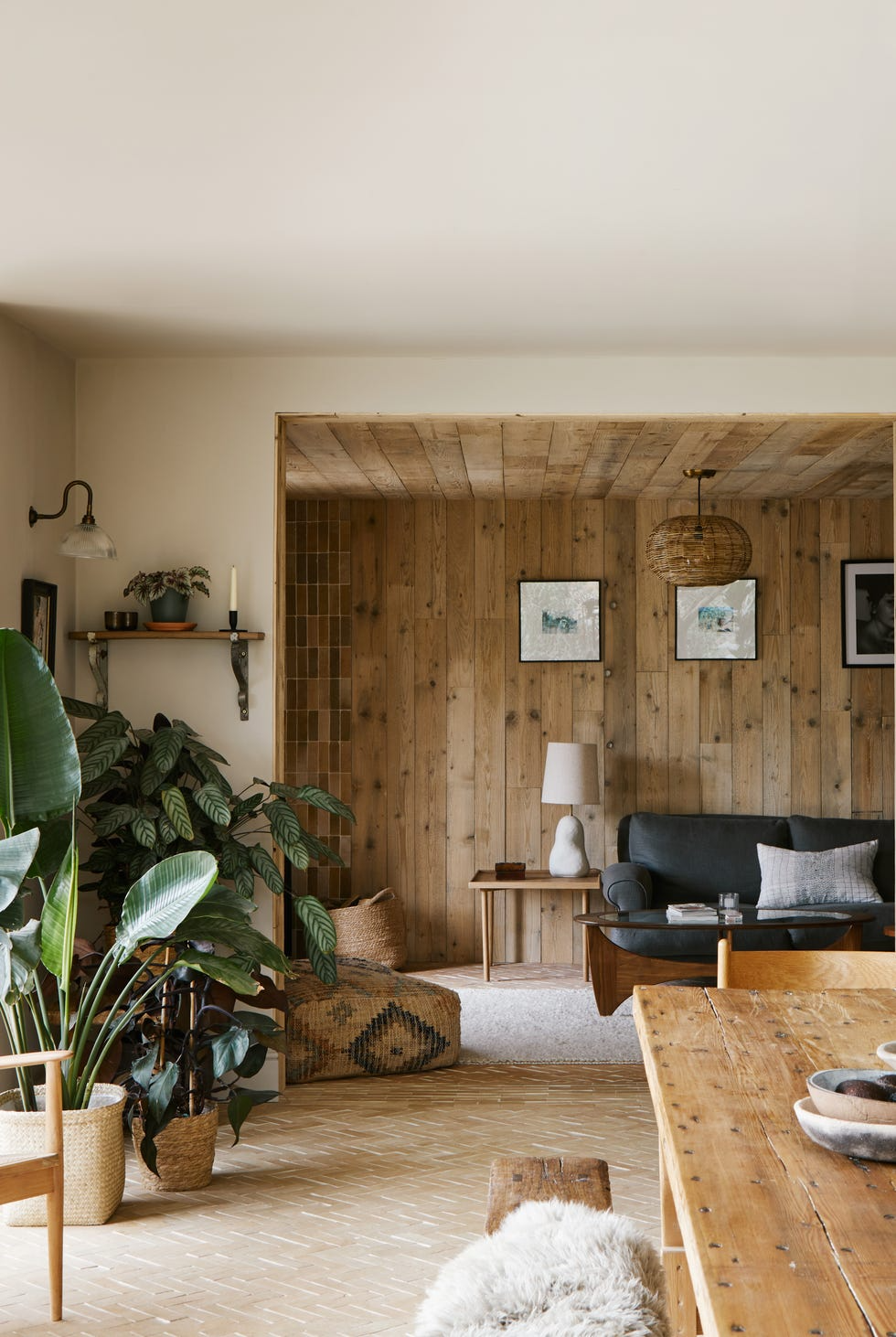
Social media makes it so easy to overspend on things we don’t need, not least when you’re building a home. When Lee Thornley, the founder of the tile company Bert & May, bought a Georgian cottage in a conservation village with his husband, he chose to use salvaged materials to make the house into what he wanted. “I think there’s a duty on all of us to stop buying things you don’t need,” Thornley says. “If you have the privilege that you can pay to do your interior in the way that we’ve done it, then I just don’t think that it’s right to think of this as a choice. I think if there’s beautiful materials already out there, people should be using them.”
A LEED-Certified Home on the Gulf Coast
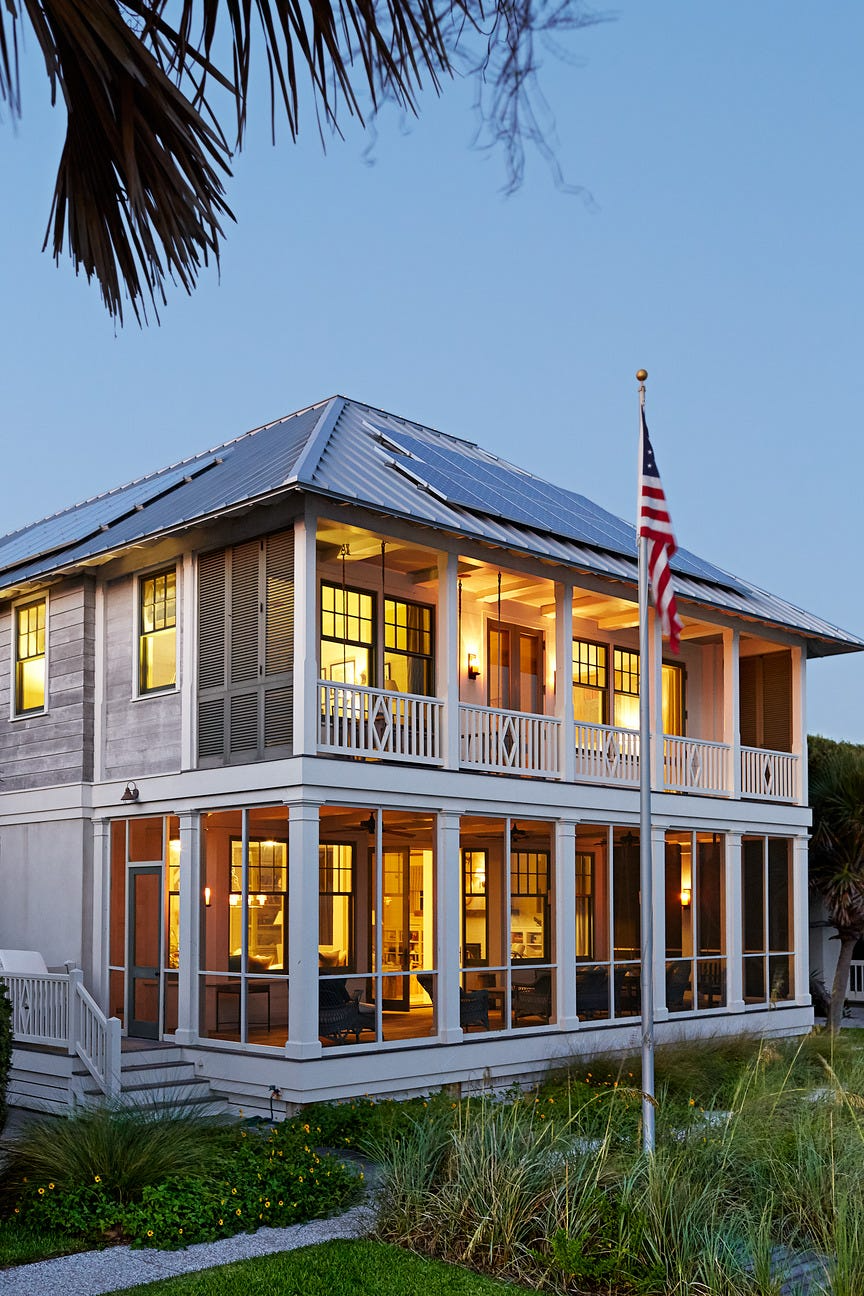
If you’re unfamiliar with what LEED certification is, it’s a rating system established by the U.S. Green Building Council (USGBC) that “provides a framework for healthy, highly efficient, and cost-saving green buildings,” according to USGBC. Though it’s more common for commercial buildings (including the headquarters of House Beautiful’s parent company, Hearst Corporation) to be built to LEED standards, single-family homes can do it. Tammy Connor’s client wanted to live in a way that’s as ecologically conscious as possible, so she made sure her new-build would meet LEED standards, lining the tin roof with solar panels and using eco-conscious materials.
Low-Water Landscaping in Arizona
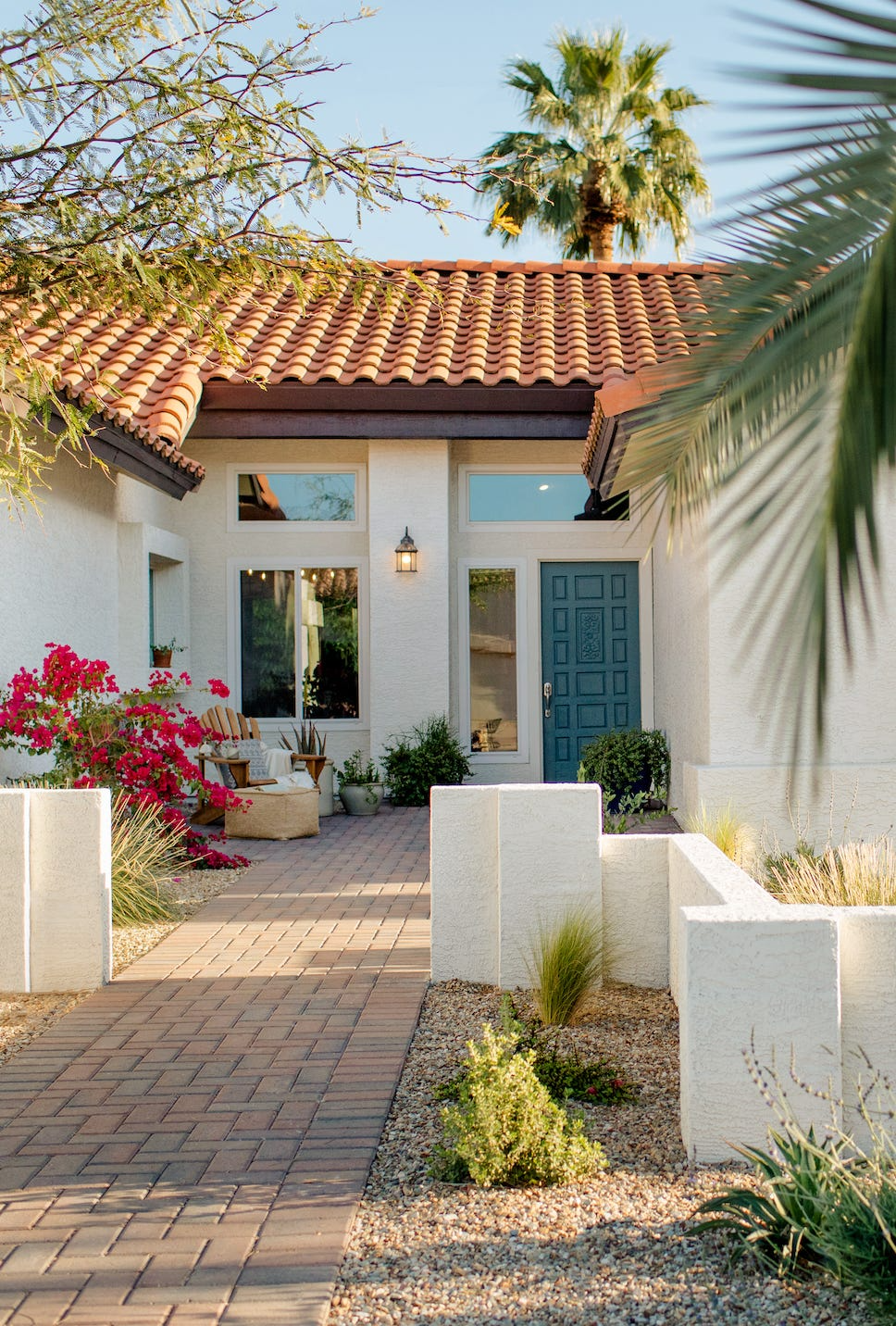
To conserve water, choose plants for your yard that don’t require a sprinkler system to stay looking beautiful. This home in Tempe, Arizona, got a makeover by Yardzen that prioritized native desert plants. Kevin Lenhart, design director of Yardzen, says that’s something more and more people want. “85 percent of our customers indicate they want low-water plants in their yard,” he says. “We’re seeing increased requests for unique water-smart designs that incorporate pollinator-loving plants and climate-adapted plants with a softer, more romantic feel. Homeowners want alternatives to traditional lawns: more seating areas, planting beds, play areas, and water-wise, habitat-supporting plants.”
An Earth-Sheltered House

If you’re a fan of The Hobbit, then this inspiring idea is for you. This eco-friendly house, made possible by Pulled, was built into the side of a hill, taking advantage of the natural insulation from the earth. S0-called earth-sheltered houses like this one, with one or more walls covered by the ground, are an emerging trend in sustainable design. They’re less sensitive to changes in the outside air temperature, and they visually blend right into the landscape rather than disturbing it. They tend to face south and leave the front of the structure exposed so that it gets the best light possible.
A Tudor Treasure in Los Angeles

This 1920s Tudor was in danger of being knocked down like its neighbors, but a smart preservation—and conservation—plan by
Maverick Design and Wedgewood Homes turned it into a beautiful and ec0-friendly house for a family. The neglected yard got redeveloped with water-smart plants. “We landscape with the local environment in mind, using native plants that grow with little water use,” Jessica Sommer, vice president of Maverick Design and Wedgewood Homes, tells us. The home’s design is environmentally conscious too, indoors and out. “Other approaches we’re taking that homeowners can replicate are using more light roof/cool roofing materials to lower heat gain and cooling costs in states with warmer average temperatures, installing water-conscious fixtures and dual-pane windows, and sourcing local materials.”
A Solar-Powered Rocky Mountain Ranch
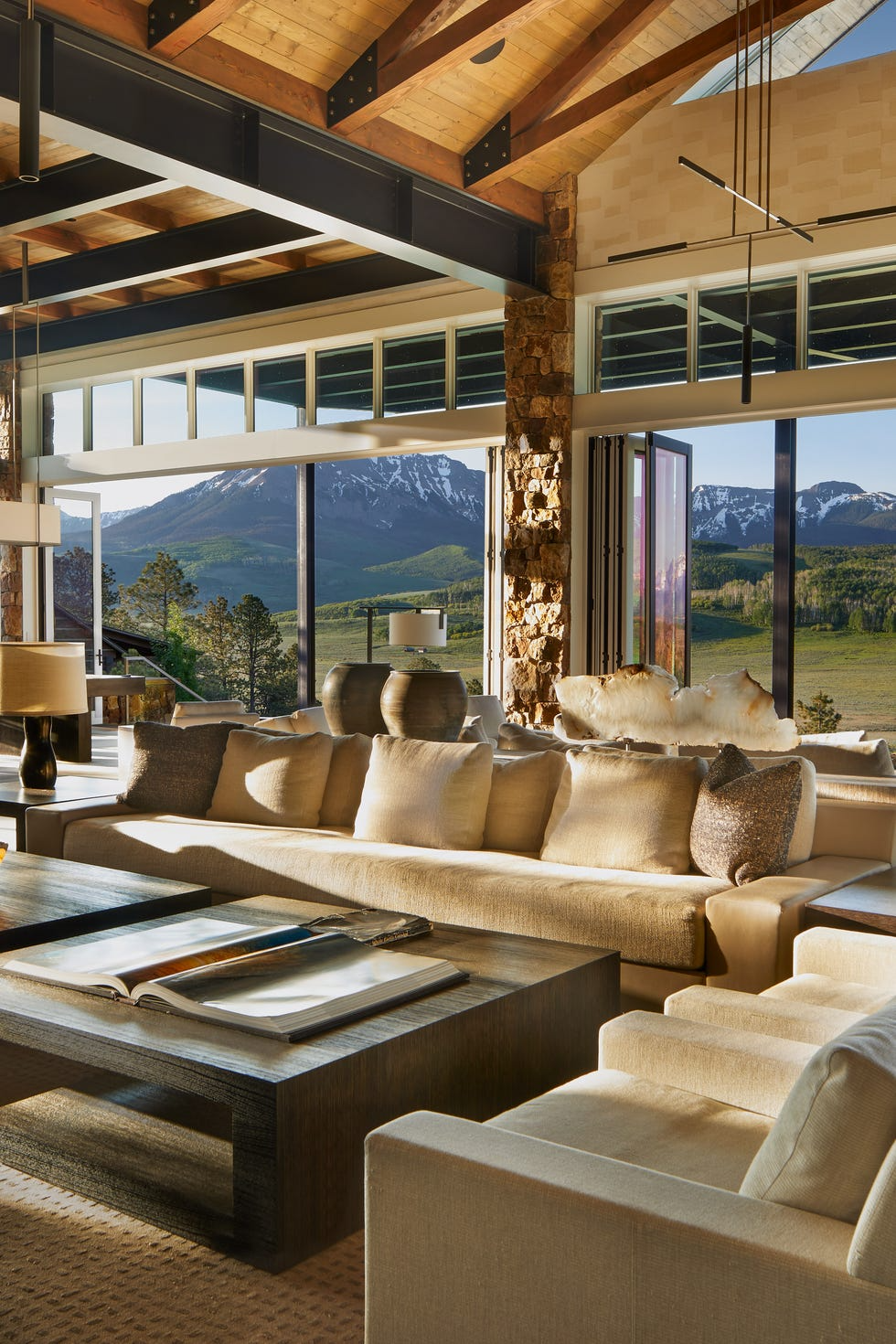
Solar power is the future—and it may not be as expensive as you think to install panels. They can help offset your energy expenses, especially when you’re running your heating or cooling full blast. For instance, this home, Hidden Rocks Ranch in Placerville, Colorado, has air-conditioning powered by “a state-of-the-art solar ‘power plant’ with two large Kohler diesel backup generators.”
A Clean Sweep in the Florida Keys

This eco-friendly house in Siesta Key Beach, Florida, features “organic textures like reclaimed wood, raffia, and natural fibers, [which] are balanced with clean lines and refined pops of marble, velvet, and brass to demonstrate the versatility of elevated sustainable home design,” Sarit Marcus, an interior designer and the founder of Minted Space, says. Prior to her team coming in, the house had already been renovated with other “sustainable construction” practices. “It has Lauzon Pure Genius smart flooring, which is the world’s first smart wood flooring, as well as digitized smart shower systems, a smart irrigation system that utilizes reclaimed well water, and more,” Marcus says.
A Passive House in the Santa Monica Mountains
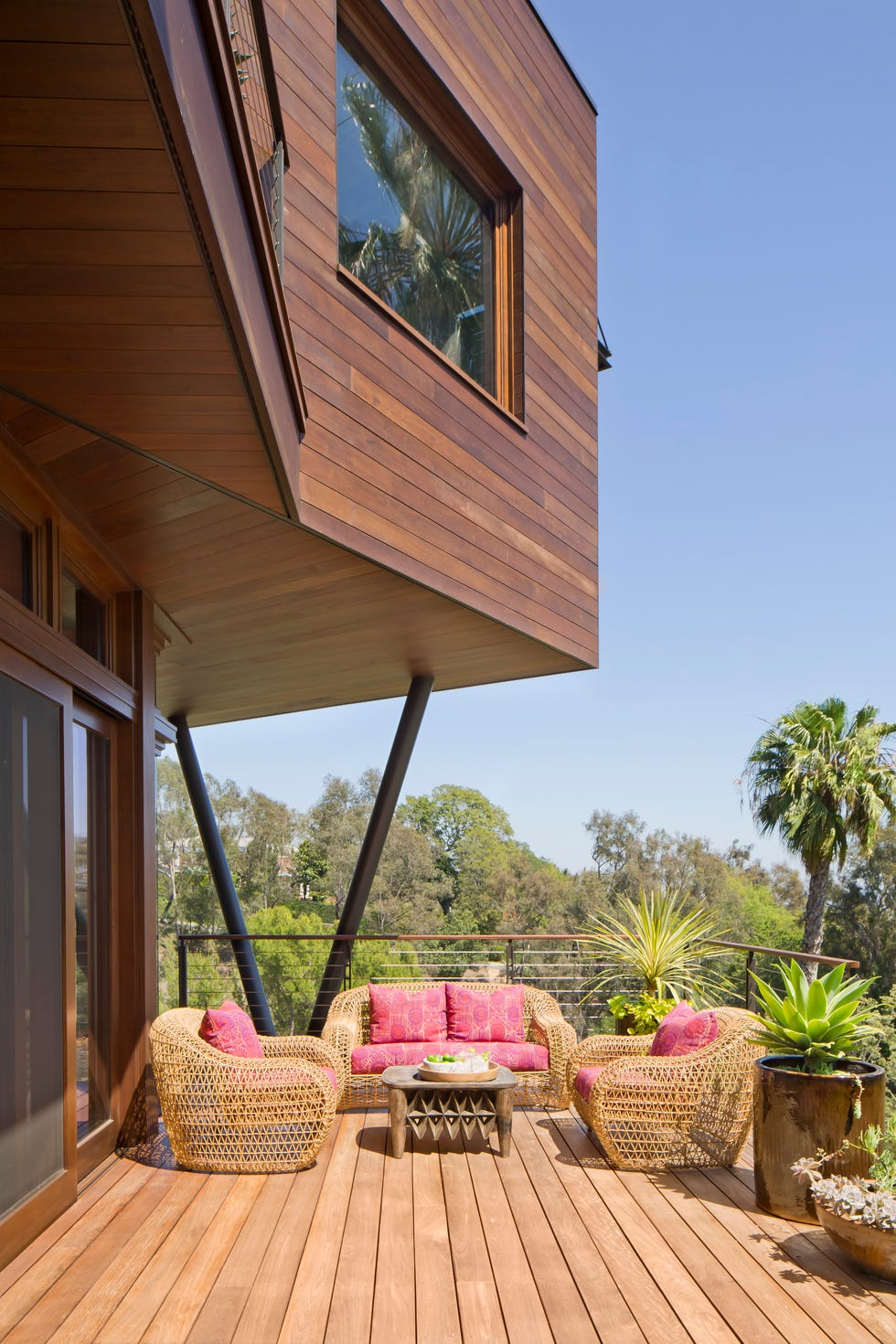
This project by Duan H. M. Tran, a partner at KAA Design, shows that your home can be as beautiful as it is sustainable. “So much of our Tower Grove residence is about living sustainably with the land,” Tran says. To take advantage of the natural environment around the property, the team installed a “photovoltaic butterfly roof,” aka solar panels, for energy, and utilized “passive airflow through cross-ventilation” to help cool the home, Tran says.
A Water-Wise Home
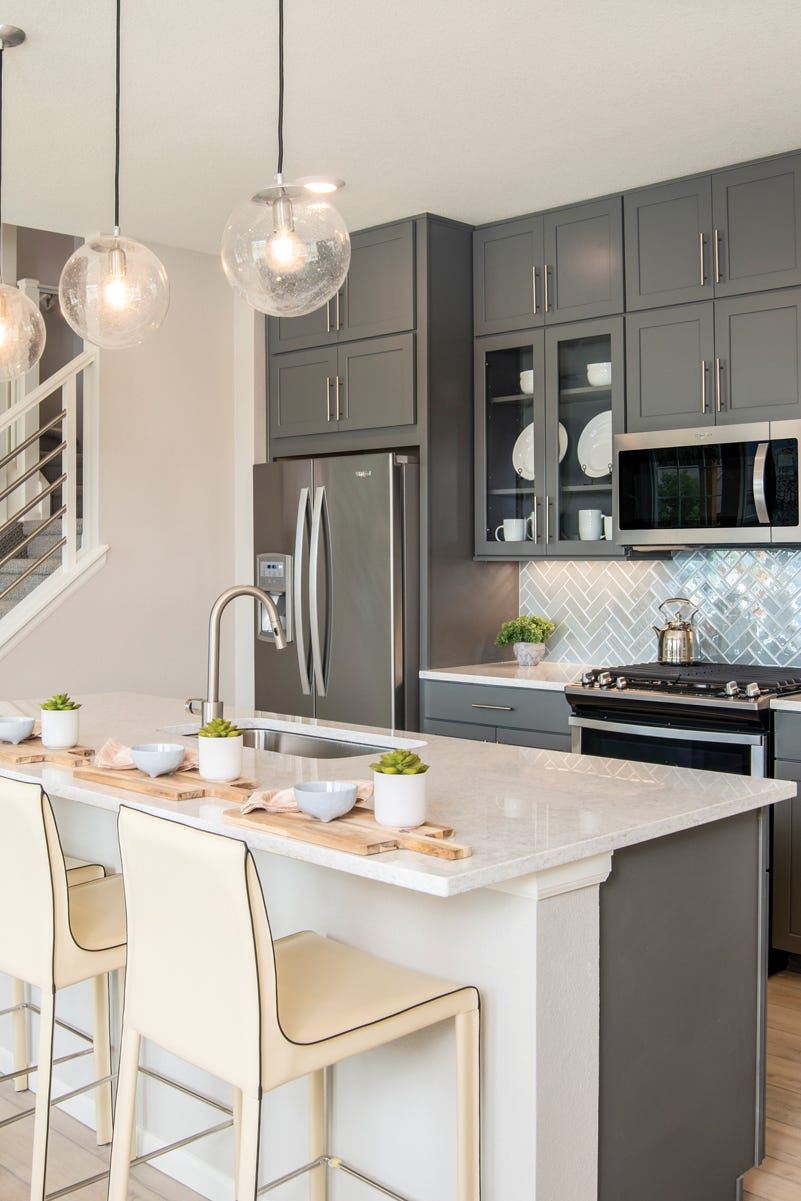
You can equip your kitchen with features that purposely help reduce water waste. In the kitchen of this new build by KB Homes, a WaterSense faucet helps reduce water use. You can use similar fixtures in your bathrooms too—and it’s great for resale value. “There is a growing interest from homebuyers for water-saving features that reduce utility bills and help to mitigate the strain on local communities,” Dan Bridleman, senior vice president of sustainability at KB Home, says. “One way to support water conservation is by installing EPA-approved WaterSense fixtures, such as Moen faucets and Kohler toilets.”